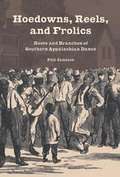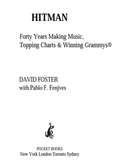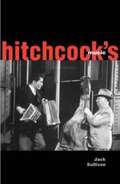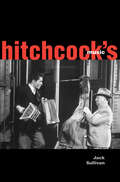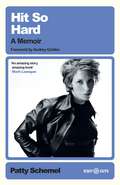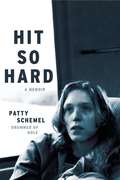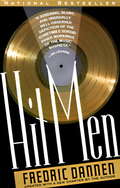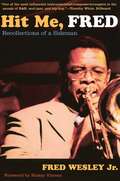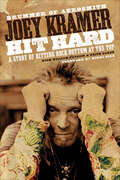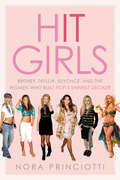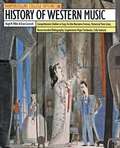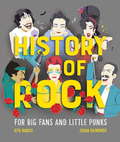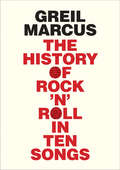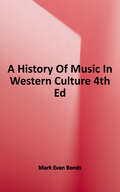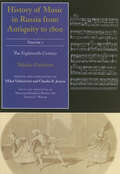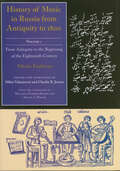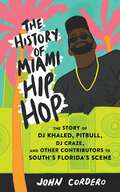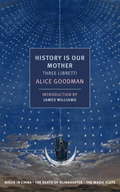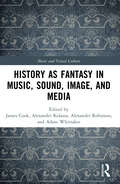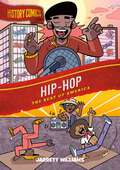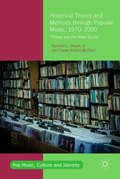- Table View
- List View
Hoedowns, Reels, and Frolics: Roots and Branches of Southern Appalachian Dance
by Phil JamisonIn Hoedowns, Reels, and Frolics, old-time musician and flatfoot dancer Philip Jamison journeys into the past and surveys the present to tell the story behind the square dances, step dances, reels, and other forms of dance practiced in southern Appalachia. These distinctive folk dances, Jamison argues, are not the unaltered jigs and reels brought by early British settlers, but hybrids that developed over time by adopting and incorporating elements from other popular forms. He traces the forms from their European, African American, and Native American roots to the modern day. On the way he explores the powerful influence of black culture, showing how practices such as calling dances as well as specific kinds of steps combined with white European forms to create distinctly "American" dances. From cakewalks to clogging, and from the Shoo-fly Swing to the Virginia Reel, Hoedowns, Reels, and Frolics reinterprets an essential aspect of Appalachian culture.
Hitman: Forty Years Making Music, Topping the Charts, and Winning Grammys
by David FosterAfter almost four decades in the music business, David Foster -- producer, arranger, songwriter, performer -- is finally ready to talk. In this compelling and outspoken memoir, Foster shares some of his incredible stories: the first time he met Barbra Streisand, as a young session player in Los Angeles; his first of 15 Grammys® for "After the Love Has Gone," Earth, Wind & Fire's memorable hit; the making of Unison, Celine Dion's English-language debut; the challenges he faced on his way to putting the group Chicago back on the charts; his award-winning contribution to Unforgettable: With Love, Natalie Cole's comeback album; those back-to-back recording sessions with Madonna and Michael Jackson; and the incredible chain of events that spawned Whitney Houston's historic blockbuster, "I Will Always Love You." Foster has worked with superstars of every decade, including: Celine Dion - Josh Groban - Whitney Houston - Michael Bublé - Barbra Streisand - Andrea Bocelli - Madonna - Michael Jackson - Natalie Cole - George Harrison - Earth, Wind & Fire - *NSYNC - Chicago - Paul McCartney - All-4-One - Katharine McPhee - Toni Braxton - Alice Cooper - Olivia Newton-John - Michael Bolton ...and many more. From his unique and privileged vantage point, Foster describes the delicate balancing act between artist and producer, offers revealing portraits of some of those artists at work, and shares his secrets for success in the maddeningly fickle music industry. At its heart, this is the story of a boy with perfect pitch who grew up to become one of the most influential musical forces of our time -- the solid gold hitman who produced the soundtrack of our lives.
Hitchcock's Music
by Jack SullivanFor half a century Alfred Hitchcock created films full of gripping and memorable music. Over his long career he presided over more musical styles than any director in history and ultimately changed how we think about film music. This book is the first to fully explore the essential role music played in the movies of Alfred Hitchcock. Based on extensive interviews with composers, writers, and actors, and research in rare archives, Jack Sullivan discusses how Hitchcock used music to influence the atmosphere, characterization, and even storylines of his films. Sullivan examines the director's important relationships with various composers, especially Bernard Herrmann, and tells the stories behind the musical decisions. Covering the whole of the director's career, from the early British works up to Family Plot, this engaging look at the work of Alfred Hitchcock offers new insight into his achievement and genius and changes the way we watch-and listen-to his movies.
Hitchcock's Music
by Jack Sullivan"A wonderfully coherent, comprehensive, groundbreaking, and thoroughly engaging study&” of how the director of Psycho and The Birds used music in his films (Sidney Gottlieb, editor of Hitchcock on Hitchcock). Alfred Hitchcock employed more musical styles and techniques than any film director in history, from Marlene Dietrich singing Cole Porter in Stage Fright to the revolutionary electronic soundtrack of The Birds. Many of his films—including Notorious, Rear Window, Vertigo, North by Northwest, and Psycho—are landmarks in the history of film music. Now author and musicologist Jack Sullivan presents the first in-depth study of the role music plays in Hitchcock&’s films. Based on extensive interviews with composers, writers, and actors, as well as archival research, Sullivan discusses how Hitchcock used music to influence his cinematic atmospheres, characterizations, and even storylines. Sullivan examines the director&’s relationships with various composers, especially Bernard Herrmann, and tells the stories behind some of their now-iconic musical choices. Covering the entire director&’s career, from the early British works up to Family Plot, this engaging work will change the way we watch—and listen—to Hitchcock&’s movies.
Hit So Hard: A Memoir (Deep Cuts)
by Patty SchemelFOREWORD BY AUDREY GOLDEN, AUTHOR OF I THOUGHT I HEARD YOU SPEAKHit So Hard is a memoir of renewal and hope; a window onto the 90s Seattle grunge scene, and a testament to the enduring power of the music Patty helped create as drummer in Hole with Courtney Love. With a brand new introduction by Audrey Golden to cast a new light on the book today, and published for the first time in the UK as part of White Rabbit's Deep Cuts series, Hit So Hard documents her life in the band, battle with addiction and descent into homelessness on the streets of LA; and her rewarding path to sobriety and happiness.'Though Hit So Hard is ultimately a deeply personal story, it's also the story of one of the most successful bands of the '90s: Hole...Schemel describes her years with the band with the same unflinching honesty and eye for telling detail that she brings to all parts of her life' LA Weekly'Not a book one should approach lightly or 'just' for the behind the scenes tales. If you want them, you'll certainly get them, but they're not why you should read...[Schemel's] voice is an engaging one throughout, honest but not tendentious, often vivid in her sense of exact detail'The Quietus
Hit So Hard: A Memoir
by Patty SchemelA stunningly candid portrait of the Seattle grunge scene of the '90s and a memoir of an addict during the last great era of rock 'n' roll excess, by Hole drummer Patty SchemelPatty Schemel's story begins with a childhood surrounded by the AA meetings her parents hosted in the family living room. Their divorce triggered her first forays into drinking at age twelve and dovetailed with her passion for punk rock and playing the drums. Patty's struggles with her sexuality further drove her notoriously hard playing, and by the late '80s she had focused that anger, confusion, and drive into regular gigs with well-regarded bands in Tacoma, Seattle, and Olympia, Washington. She met a pre-Nirvana Kurt Cobain at a Melvins show, and less than five years later, was living with him and his wife, Hole front-woman Courtney Love, at the height of his fame and on the cusp of hers. As the platinum-selling band's new drummer, Schemel contributed memorable, driving beats to hits like "Beautiful Son," "Violet," "Doll Parts," and "Miss World." But the band was plagued by tragedy and heroin addiction, and by the time Hole went on tour in support of their ironically titled and critically-acclaimed album Live Through This in 1994, both Cobain and Hole bassist Kristen Pfaff had died at the age of 27With surprising candor and wit, Schemel intimately documents the events surrounding her dramatic exit from the band in 1998 that led to a dark descent into a life of homelessness and crime on the streets of Los Angeles, and the difficult but rewarding path to lasting sobriety after more than twenty serious attempts to get clean. Hit So Hard is a testament not only to the enduring power of the music Schemel helped create but an important document of the drug culture that threatened to destroy it.
Hit Men: Power Brokers and Fast Money Inside the Music Business
by Fredric DannenHit Men is the shocking, highly controversial expose of the venality, greed, and corruption of many of the assorted kingpins and hustlers who rule over the music industry. "A sobering, blunt, and unusually well-observed depiction of the sometimes sordid inner workings of the music business."--Billboard. 4 pages of photographs.From the Trade Paperback edition.
Hit Me, FRED: Recollections of a Sideman
by Fred Wesley Jr.With Hit Me, Fred, sensational sideman Fred Wesley Jr. moves front and center to tell his life story. A legendary funk, soul, and jazz musician, Wesley is best known for his work in the late sixties and early seventies with James Brown and as the leader of Brown's band, Fred Wesley and the JB's. Having been the band's music director, arranger, trombone player, and frequent composer, Wesley is one of the original architects of funk music. He describes what it was like working for the Godfather of Soul, revealing the struggle and sometimes stringent discipline behind Brown's tight, raucous tunes. After leaving Brown and the JB's, Wesley arranged the horn sections for Parliament, Funkadelic, and Bootsy's Rubber Band, and led Fred Wesley and the Horny Horns. Adding his signature horn arrangements to the P-Funk mix, Wesley made funk music even funkier. Wesley's distinctive sound reverberates through rap and hip-hop music today. In Hit Me, Fred, he recalls the many musicians whose influence he absorbed, beginning with his grandmother and father--both music teachers--and including mentors in his southern Alabama hometown and members of the Army band. In addition to the skills he developed working with James Brown, George Clinton, Bootsy Collins, and the many talented musicians in their milieu, Wesley describes the evolution of his trombone playing through stints with the Ike and Tina Turner Revue, Hank Ballard, and Count Basie's band. He also recounts his education in the music business, particularly through his work in Los Angeles recording sessions. Wesley is a virtuoso storyteller, whether he's describing the electric rush of performances when the whole band is in the groove, the difficulties of trying to make a living as a rhythm and blues musician, or the frustrations often felt by sidemen. Hit Me, Fred is Wesley's story of music-making in all its grit and glory.
Hit Hard: A Story of Hitting Rock Bottom at the Top
by Joey Kramer William Patrick Keith GardeIn 1997, amid Aerosmith's sold-out world tour and number one album release, word about Joey's troubles was reported in the press.Despite the advice he had received to play it down, Joey revealed in an interview his ongoing struggles with depression. The response from fans and people battling those same internal demons was overwhelming. Joey—who has been the drummer in Aerosmith since it was founded in 1970 and is the first member of the band to release his own book—now tells the complete story: the early days of the band, glamorous drug-addled events leading up to their eventual sobriety, battles within his family and among bandmates, and the explosive internal dynamics in Aerosmith that continue to unleash a fury of endless creativity. This is not just another rock 'n' roll memoir. In addition to the never-before-told Aerosmith war stories that abound in the book, Hit Hard unpacks the history of a rock star who was both fragile and tough, who after years of insane wildness became willing to accept help and finally kick a serious alcohol and drug addiction, only to find that the real terrors and hard work were still ahead. It's the story of an average kid from an average American suburb who went through physical and emotional trauma. It's about years of depression and the nervous breakdown at the height of the band's comeback success. Ultimately, Hit Hard is about how Joey recognized his confusion between love and abuse, awakening to the kind of self-acceptance and compassion that make relationships possible in the "real world" as a member of the biggest band in American history.
Hit Girls: Britney, Taylor, Beyoncé, and the Women Who Built Pop's Shiniest Decade
by Nora PrinciottiAn entertaining and deeply nostalgic dive into how female pop stars broke through the music industry in the 2000s and altered the cultural landscape forever, from the Ringer writer and Every Single Album podcast cohost&“Hit Girls bridges our butterfly-clipped, bedazzled past with today&’s music world, revealing how the pop songs we belted in our bedrooms shaped everything we&’re streaming now.&”—Kate Kennedy, New York Times bestselling author of One in a MillennialLow-rise jeans, butterfly clips, The Lizzie McGuire Movie, and Paris Hilton&’s nights out. The early 2000s were a time of major moments in fashion, media, celebrity culture, and especially music. The aughts were a particularly fruitful era for female artists—still the only decade in the history of recorded music when women made up more than half the list of highest-grossing performers—and especially pop stars. Artists such as Britney Spears, Taylor Swift, Rihanna, and Beyoncé were leading the charge—their success not only leading to a new respect for female artists, but for pop stardom itself.In Hit Girls, Nora Princiotti examines how these artists redefined the role of the pop star within the music industry and culture more broadly, and fundamentally set the stage for the women who top the charts today. Princiotti unpacks the shifts in genre, technology, and celebrity culture that sparked this evolution through the stories of the biggest names in aughties pop. Like how Britney opened the bubblegum floodgates at the start of the decade, inspiring both copycats like Christina Aguilera and Jessica Simpson and mall punk antagonists like Avril Lavigne and Ashlee Simpson. Or how innovations in technology led to the rise of EDM as Rihanna experimented with sound while Ke$ha and Katy Perry embraced the &“party anthem.&”Along the way, Princiotti explores how celebrity evolved alongside the changes in media from the tabloid days à la Lindsay Lohan to MySpace, Instagram and how Taylor created one of the largest, most dedicated fandoms the world has ever seen.The ultimate love letter to pop music, Hit Girls celebrates the women who revolutionized the genre, inspired the next generation, and—in some cases—are burning brighter than ever.
Hit Factories: A Journey Through the Industrial Cities of British Pop
by Karl WhitneyAfter discovering a derelict record plant on the edge of a northern English city, and hearing that it was once visited by David Bowie, Karl Whitney embarks upon a journey to explore the industrial cities of British pop music.Manchester, Liverpool, Newcastle, Leeds, Sheffield, Hull, Glasgow, Belfast, Birmingham, Coventry, Bristol: at various points in the past these cities have all had distinctive and highly identifiable sounds. But how did this happen? What circumstances enabled those sounds to emerge? How did each particular city - its history, its physical form, its accent - influence its music? How were these cities and their music different from each other? And what did they have in common?Hit Factories tells the story of British pop through the cities that shaped it, tracking down the places where music was performed, recorded and sold, and the people - the performers, entrepreneurs, songwriters, producers and fans - who made it all happen. From the venues and recording studios that occupied disused cinemas, churches and abandoned factories to the terraced houses and back rooms of pubs where bands first rehearsed, the terrain of British pop can be retraced with a map in hand and a head filled with music and its many myths.
Hit Factories: A Journey Through the Industrial Cities of British Pop
by Karl WhitneyAfter discovering a derelict record plant on the edge of a northern English city, and hearing that it was once visited by David Bowie, Karl Whitney embarks upon a journey to explore the industrial cities of British pop music.Manchester, Liverpool, Newcastle, Leeds, Sheffield, Hull, Glasgow, Belfast, Birmingham, Coventry, Bristol: at various points in the past these cities have all had distinctive and highly identifiable sounds. But how did this happen? What circumstances enabled those sounds to emerge? How did each particular city - its history, its physical form, its accent - influence its music? How were these cities and their music different from each other? And what did they have in common?Hit Factories tells the story of British pop through the cities that shaped it, tracking down the places where music was performed, recorded and sold, and the people - the performers, entrepreneurs, songwriters, producers and fans - who made it all happen. From the venues and recording studios that occupied disused cinemas, churches and abandoned factories to the terraced houses and back rooms of pubs where bands first rehearsed, the terrain of British pop can be retraced with a map in hand and a head filled with music and its many myths.
History of Western Music 5th Edition
by Hugh M. Miller Dale CockrellPrepared for students by renowned professors and noted experts, here are the most extensive and proven study aids available, covering all the major areas of study in college curriculums. Each guide features: up-to-date scholarship; an easy-to-follow narrative outline form; specially designed and formatted pages; and much more.
History of Rock: For Big Fans and Little Punks
by Rita NabaisTHE PERFECT CHRISTMAS GIFT FOR BIG MUSIC FANS AND LITTLE PUNKS.What are the greatest rock songs of all time? Who are the most famous musical legends? How can you become a rock star? From the rip-roaring rock and roll rhythms of the 1950s to the psychedelic anthems of the 21st century, discover the music that has moved our feet, touched our souls and mended broken hearts. Explore musical icons, their incredible stories, their chart-topping hits and the artistic movements influenced by the creative explosion of rock.Whether you're bonkers for Bowie, obsessed with Otis, mad about Mumford & Sons, passionate about Patti or crazy about Kurt, this is the perfect book for big fans, little punks and anyone who wants to learn what it really takes to be a rock star.
History of Rock and Roll
by Thomas E. LarsonThis book was written by a college professor who teaches a class about the history and evolution of rock music over the past 55 years. Each chapter discusses an ear in rock history, pointing out the influences that shaped it and featuring key artists from that period. The book is rich in content and is so entertaining that you might forget it's a textbook until you see the study questions at the end of each chapter. The author provides suggestions for listening to songs that help you get an idea of the style he is describing.
History of Rock 'n' Roll in Ten Songs
by Greil MarcusThe legendary critic and author of Mystery Train &“ingeniously retells the tale of rock and roll&” (Publishers Weekly, starred review). Unlike previous versions of rock &’n&’ roll history, this book omits almost every iconic performer and ignores the storied events and turning points everyone knows. Instead, in a daring stroke, Greil Marcus selects ten songs and dramatizes how each embodies rock &’n&’ roll as a thing in itself, in the story it tells, inhabits, and acts out—a new language, something new under the sun. &“Transmission&” by Joy Division. &“All I Could Do Was Cry&” by Etta James and then Beyoncé. &“To Know Him Is to Love Him,&” first by the Teddy Bears and almost half a century later by Amy Winehouse. In Marcus&’s hands these and other songs tell the story of the music, which is, at bottom, the story of the desire for freedom in all its unruly and liberating glory. Slipping the constraints of chronology, Marcus braids together past and present, holding up to the light the ways that these striking songs fall through time and circumstance, gaining momentum and meaning, astonishing us by upending our presumptions and prejudices. This book, by a founder of contemporary rock criticism—and its most gifted and incisive practitioner—is destined to become an enduring classic. &“One of the epic figures in rock writing.&”—The New York Times Book Review &“Marcus is our greatest cultural critic, not only because of what he says but also, as with rock-and-roll itself, how he says it.&”—The Washington Post Winner of the Deems Taylor Virgil Thomson Award in Music Criticism, given by the American Society of Composers, Authors & Publishers
History of Music in Western Culture
by Mark Evan BondsLearn the History of Music, through Music. A History of Music in Western Culture, 4/e is based on the premise that the best way to convey the history of Western music is to focus on specific works of music. The text is structured around a carefully selected repertory of music that reflects the development of the art form throughout time. Mark Evan Bonds helps readers gain a broad understanding of the nature of music, its role in society, and the ways in which these have changed over time. <p><p>A History of Music in Western Culture challenges students to think critically about the nature of music and its past. Once familiar with a representative body of music, students can better grasp the evolution of musical style and music's changing uses within the Western tradition. Students will have a sound basis from which to explore other musical works. This text builds its narrative around the core repertory represented in the Anthology of Scores and the corresponding sets of compact discs. Learning Goals -Upon completing this book, students will be able to: - Grasp the evolution of musical style and music's changing uses within the Western tradition. - Have a sound basis from which to explore other musical works. - Gain a better understanding of the nature of music.
History of Music in Russia from Antiquity to 1800, Volume 2: The Eighteenth Century (History of Music in Russia from Antiquity to 1800 #2)
by Nikolai FindeizenIn its scope and command of primary sources and its generosity of scholarly inquiry, Nikolai Findeizen's monumental work, published in 1928 and 1929 in Soviet Russia, places the origins and development of music in Russia within the context of Russia's cultural and social history.Volume 2 of Findeizen's landmark study surveys music in court life during the reigns of Elizabeth I and Catherine II, music in Russian domestic and public life in the second half of the 18th century, and the variety and vitality of Russian music at the end of the 18th century.
History of Music in Russia from Antiquity to 1800, Volume 1: From Antiquity to the Beginning of the Eighteenth Century (History of Music in Russia from Antiquity to 1800 #1)
by Nikolai FindeizenIn its scope and command of primary sources and its generosity of scholarly inquiry, Nikolai Findeizen's monumental work, published in 1928 and 1929 in Soviet Russia, places the origins and development of music in Russia within the context of Russia's cultural and social history.Volume 2 of Findeizen's landmark study surveys music in court life during the reigns of Elizabeth I and Catherine II, music in Russian domestic and public life in the second half of the 18th century, and the variety and vitality of Russian music at the end of the 18th century.
History of Miami Hip Hop, The: The Story of DJ Khaled, Pitbull, DJ Craze, and Other Contributors to South Florida's Scene
by John CorderoIn the late 90s, the music scene in Miami was at the infancy of becoming the multi-million dollar cultural and artistic force that it is today. Musicians like Pitbull, DJ Khaled, and countless others staked Miami&’s claim as the newest Mecca for Hip Hop heads and graffiti artists. During this time, The Cipher was created. An independent newspaper that followed the scene and included reviews, interviews, essays, photos, and more, The Cipher was the choice source for discovering Miami&’s underground. The History of Miami Hip Hop chronicles the ups and downs of this legendary rag during its short tenure. Author John Cordero presents both a memoir of his time as one of the newspaper&’s creators, and an anthology of some of The Cipher&’s greatest hits. Both a love letter to The Cipher as well as 1990s Miami, this narrative is an essential chapter in the history of Hip Hop&’s third coast. The book features never-before-seen photos of 1990s stars RZA, Ghostface Killah, and Method Man of Wu-Tang, Andre 3000 of Outkast, Black Thought of The Roots, Phife of A Tribe Called Quest (R.I.P.), Lil' Kim, Aaliyah (R.I.P.), and artists that achieved global celebrity in the 2000s, like Destiny's Child, The Black Eyed Peas, Timbaland, DJ Khaled, and many more.
History is Our Mother: Nixon in China, The Death of Klinghoffer, The Magic Flute
by James Williams Alice GoodmanThe first appearance of Alice Goodman's two internationally-renowned and controversial libretti, alongside one of her masterful translations.An NYRB Classics Original Nixon in China and The Death of Klinghoffer played a crucial role in bringing opera back to life as a contemporary art form, and they have been popular—and, in the case of Klinghoffer, highly controversial—ever since they were first staged by the director Peter Sellars in the eighties and nineties. Both operas were conceived from the start as collaborations between composer and writer, and their power is due as much to the dazzlingly constructed and deeply felt libretti of the poet Alice Goodman as they are to John Adams’s music. Nixon in China is a story, at once heroic, comic, and unnerving, of men and women making history and of their different conceptions of what history is and what it means to makes it. Klinghoffer, by contrast, has at its center the tragedy of an innocent man condemned at the cost of his life to play a part in history. History Is Our Mother, which takes its title from a line sung by the title character in Nixon in China, brings Goodman’s two libretti together for the first time in book form. Included alongside Goodman’s no less inspired translation of Emanuel Schikaneder’s famous libretto to The Magic Flute, these vivid dramas of character and searching meditations on fate are here revealed as among the most original, ambitious, and accomplished poetic achievements of our time.
History as Fantasy in Music, Sound, Image, and Media (Music and Visual Culture)
by James Cook, Alexander Kolassa, Alexander Robinson, and Adam WhittakerExploring how music is used to portray the past in a variety of media, this book probes the relationship between history and fantasy in the imagination of the musical past. The volume brings together essays from multidisciplinary perspectives, addressing the use of music to convey a sense of the past in a wide range of multimedia contexts, including television, documentaries, opera, musical theatre, contemporary and historical film, videogames, and virtual reality. With a focus on early music and medievalism, the contributors theorise the role of music and sound in constructing ideas of the past. In three interrelated sections, the chapters problematise notions of historical authenticity on the stage and screen; theorise the future of musical histories in immersive and virtual media; and explore sound’s role in more fantastical appropriations of history in television and videogames. Together, they poseprovocative questions regarding our perceptions of ‘early’ music and the sensory experience of distant history. Offering new ways to understand the past at the crossroads of musical and visual culture, this collection is relevant to researchers across music, media, and historical and cultural studies.
History Comics: The Beat of America (History Comics)
by Jarrett WilliamsMUSICAL REVOLUTION SWEEPS NATION AND BEYONDHow did a bunch of young people from the inner city create a genre of music that became a global phenomenon? From its humble origins at house parties in the Bronx, where DJs mixed old records to create new sounds, charismatic MCs let their clever lyrics flow, and B-boys and B-girls pioneered inventive dance moves, hip-hop quickly became a musical and cultural revolution. Hip-Hop: The Beat of AmericaMeet Aaliyah, a hip-hop superfan who is about to get a lesson in all things “old school” courtesy of her dad, who grew up in the 1970s when rap music first hit the scene. The pair take a day trip to the Bronx where Aaliyah discovers the many unsung heroes who helped create the foundations of the hip-hop we all enjoy today. So get ready to drop the beat, bust a move, and get down with some fresh rap knowledge!Perfect for readers of Can't Stop, Won't Stop and Nathan Hale's Hazardous tales.
Histories of Heinrich SchüTz
by Bettina VarwigBettina Varwig places the music of the celebrated Dresden composer Heinrich Schütz in a richly detailed tapestry of cultural, political, religious and intellectual contexts. Four key events in Schütz's career – the 1617 Reformation centenary, the performance of his Dafne in 1627, the 1636 funeral composition Musikalische Exequien and the publication of his motet collection Geistliche Chormusik (1648) – are used to explore his music's resonances with broader historical themes, including the effects of the Thirty Years' War, contemporary meanings of classical mythology, Lutheran attitudes to death and the afterlife as well as shifting conceptions of time and history in light of early modern scientific advances. These original seventeenth-century circumstances are treated in counterpoint with Schütz's fascinating later reinvention in nineteenth- and twentieth-century German musical culture, providing a new kind of musicological writing that interweaves layers of historical inquiry from the seventeenth century to the present day.
Historical Theory and Methods through Popular Music, 1970–2000
by Jr. Kenneth L. Shonk Daniel Robert McclureThis book examines the post-1960s era of popular music in the Anglo-Black Atlantic through the prism of historical theory and methods. By using a series of case studies, this book mobilizes historical theory and methods to underline different expressions of alternative music functioning within a mainstream musical industry. Each chapter highlights a particular theory or method while simultaneously weaving it through a genre of music expressing a notion of alternativity--an explicit positioning of one's expression outside and counter to the mainstream. Historical Theory and Methods through Popular Music seeks to fill a gap in current scholarship by offering a collection written specifically for the pedagogical and theoretical needs of those interested in the topic.
